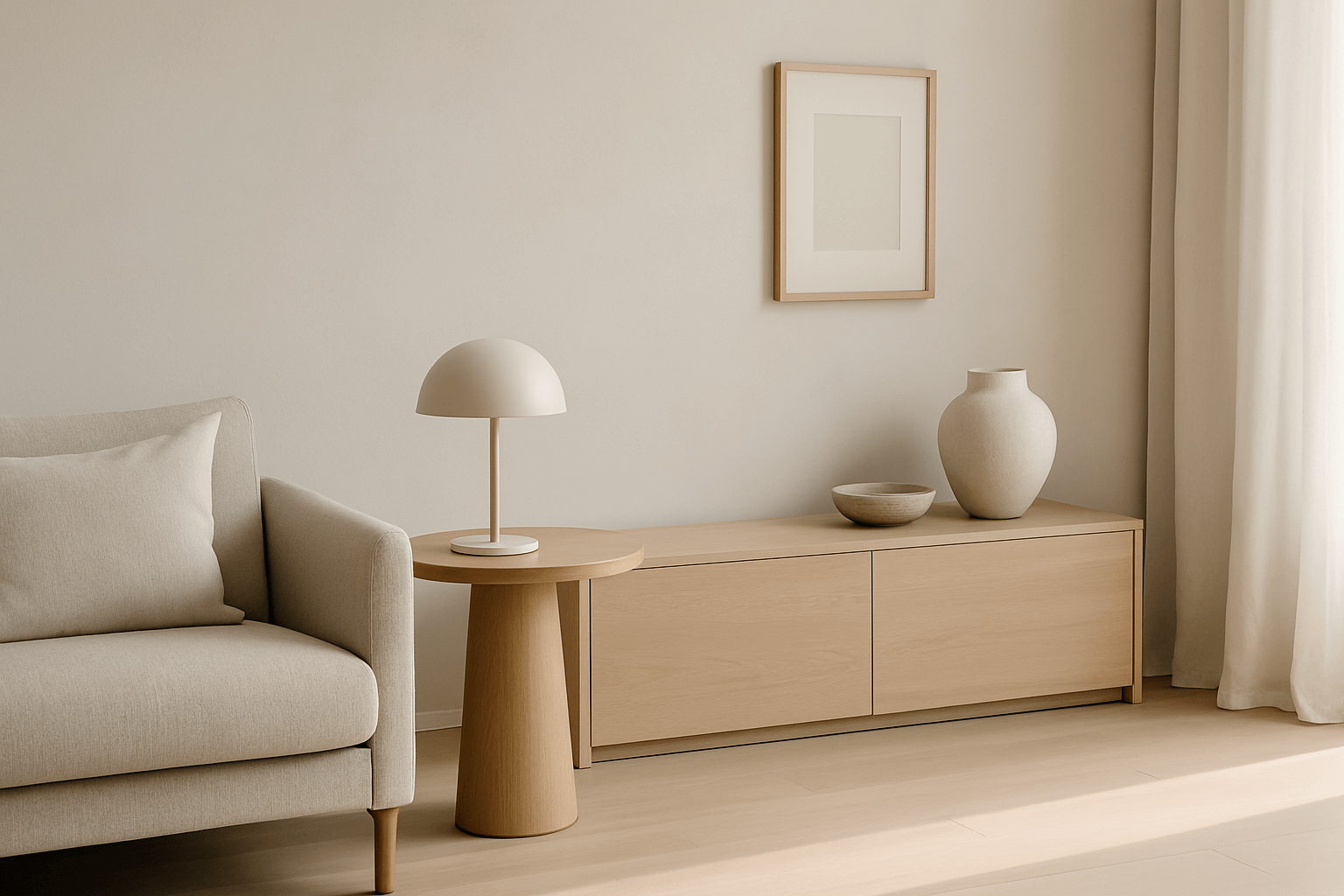Minimalism Isn’t Just About Light — It’s Also About Shadow
We often focus on light when designing a space — but in minimalist interiors, shadow is just as important.
Shadow adds depth, emotion, and rhythm to a room. It softens hard lines. It turns the ordinary into something contemplative.
To design well, you must consider both what’s seen — and what’s dimmed.
1. Shadow as Texture
In rooms with fewer objects, light and shadow become the texture. They:
-
Accentuate materials like wood grain, plaster, and linen
-
Define architectural lines
-
Move with the time of day, creating subtle variety
This shifting texture adds life to spaces that are visually still.
2. Let Your Objects Cast Shadows
Well-placed lighting transforms minimal furniture and décor into sculptural moments.
Examples:
-
A floor lamp casting a long, soft silhouette
-
A vase creating elliptical shadows on a bare wall
-
Natural light cutting across a simple chair
Shadow turns functional objects into a kind of visual poetry.
3. Embrace Imperfect Lighting
Minimalist spaces don’t require perfect, even light. In fact, slightly uneven lighting feels more human — and more peaceful.
Use:
-
Sheer curtains to diffuse daylight
-
Off-center lamps or sconces
-
Directional lighting that leaves part of the room in calm darkness
This creates zones of stillness, ideal for reflection and quiet moments.
4. Shadows Create Emotional Contrast
In minimalism, contrast doesn’t have to come from color. It can come from light against dark, even in a neutral room.
A white wall with a soft gray shadow becomes a moment of visual rest.
This emotional rhythm — light and shade — mirrors how we experience life: not in constant brightness, but in quiet shifts.
5. Use Shadow to Guide Attention
Shadow can frame what matters. By keeping some areas dim, you let others stand out gently.
This can:
-
Lead the eye through the space
-
Emphasize a particular object or corner
-
Create a feeling of balance without decoration
Minimalism isn’t about starkness — it’s about deliberate attention.
Final Thought
Designing with shadow is about restraint, sensitivity, and emotion.
When used with intention, shadow doesn’t hide. It highlights. It creates depth without adding anything at all.
In minimalist homes, what isn’t lit can be just as beautiful as what is.
















